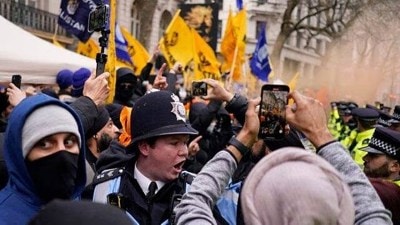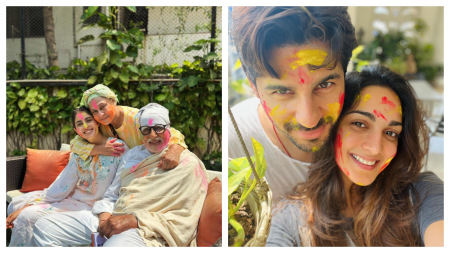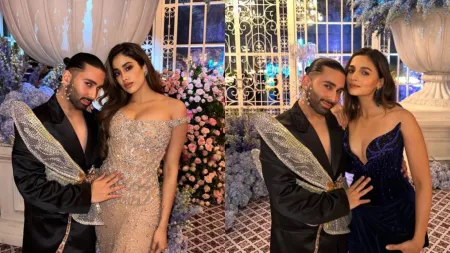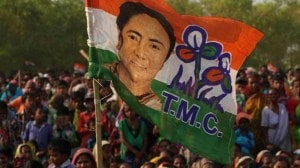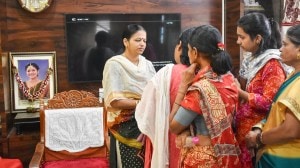- India
- International
A shot at extreme
Experimental filmmaker Ashish Avikunthak pushes the envelope further in his latest, a 105-minute one-take feature film, Rati Chakravyuh
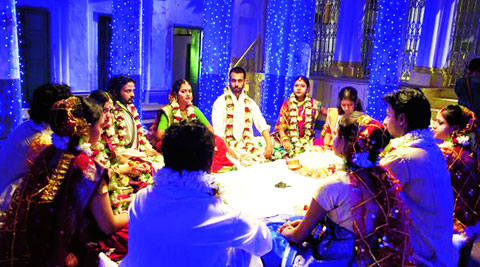 Th film has been shot by Kolkata-based cinematographer Basab Mullik
Th film has been shot by Kolkata-based cinematographer Basab Mullik
One of the beauties of Ashish Avikunthak’s Rati Chakravyuh is that one doesn’t realise when, in its 105-minute-long duration, the conversation between the 13 characters of the film shifts from classical philosophical questions on life and death to the possibility of Sita finding Raavan more sexually attractive than Ram. The narrative of the film, structured as a long conversation, playfully shuttles between contemporary events and existential questions — from the arrival of the Maruti car in the Indian middle-class lives and Sunil Gavaskar scoring a duck at Eden Gardens to personal adolescent stories to nature, love and universe. For those familiar with his experimental work, this is typical of Avikunthak’s universe, which draws from his areas of interest and bank of memories.
“You can call Rati Chakravyuh a post-colonial memory. I am very interested in contemporary history, mythology and religiosity, and here, I was trying to pick up many popular references,” explains the 42-year-old experimental filmmaker who was featured in the ArtReview magazine under the ‘Future Greats’ section for 2014. The bigger, more obvious triumph of Rati Chakravyuh is that the entire film is shot in one take. The camera moves in circles providing an unblinking gaze at the six newly-wed couples and one priestess, about to commit mass suicide, talking about “life, death and everything in between”. Here, Avikunthak experiments with the cinematic form, inviting the audience to go through time as it is, instead of the montage-cut narrative cinema we are conditioned to. “With the advent of digital format that allows shooting up to 200 minutes without cutting, I have been toying with the prospect of making a long-take film. In Rati Chakravyuh, I wanted to take it to an extreme,” he says, elucidating further, “Over time, we have forgotten that cinema is essentially a temporal medium. The reason why people were awed by the visual of a train approaching a station — shown by the Lumiere brothers — was that cinema allowed one to experience time.”
We are inside an Irani cafe at Arthur Bunder in Colaba, a stone’s throw away from Chatterjee & Lal, where Avikunthak’s film has premiered. Don’t let the venue of an art gallery mislead you, Avikunthak’s is a feature film and not an art installation video, as his last Katho Upanishad, shown in the same gallery two years ago. Instead of playing on loop as with an installation, Rati Chakravyuh is being shown like a movie with fixed timings, 1pm, 3pm and 5pm, till August 2. The gallery has become an important space for a filmmaker like Avikunthak, who “lives and makes films on the fringes of the market”.
His films have been shown worldwide in film festivals, galleries and museums, including the Tate Modern, London, along with the film festivals of Berlin, Locarno, London and Rotterdam. Currently, the assistant professor of Film Media at the Harrington School of Communication & Media, University of Rhode Island, Avikunthak lives between the US and India. At present, he is working on a film about a love triangle set in Kolkata and Vrindavan.
Rati Chakravyuh emerged out of three prime ideas that fascinated Avikunthak: people coming together before their deaths in Leonardo da Vinci’s The Last Supper, the idea of the Bengali adda that underlines people’s need to share, and mass suicide. Perhaps the longest one-take film in India in recent times, Rati Chakravyuh is shot by Kolkata-based cinematographer Basab Mullik who filmed the actors while seated on a round trolley in three takes over two days in North Kolkata’s Latu Babu Chatu Babu mansion. The film is also being screened at Kolkata’s Experimenter till July 18.
Trying to find rationality in everything may not be the right way to approach Rati Chakravyuh, says Avikunthak, who plans to take the film to Delhi soon. His characters are rather a manifestation of the unconscious that encompass a number of things that may concern a lay person—religion, cricket, even movie stars. The film is what it is because of its language. Bengali author Sougata Mukherjee has impeccably translated Avikunthak’s original script in English into chaste Bengali that effortlessly switches from the archaic to pedestrian. “Basically you hear one voice, and that is mine,” the filmmaker says.
Photos
Apr 26: Latest News
- 01
- 02
- 03
- 04
- 05











